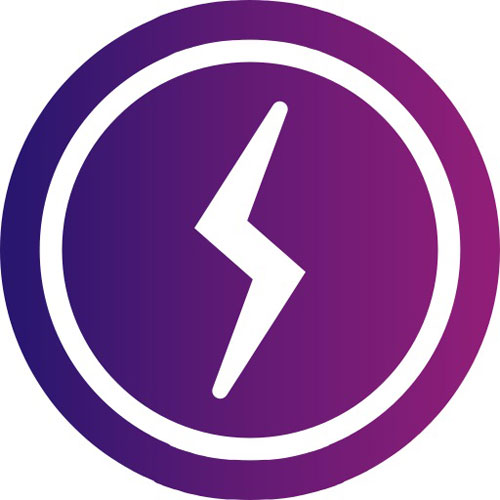The push for “electrification” is real. Are you on the (electric) bus yet, or are you waiting to see where it’s headed?
Granted, the amount of pushing may let up a little over the next few years, but that may open possibilities to get in the game easier and cheaper. And that’s a good thing, since there’s no denying that electricity is still the power of the future, even over 150 years after Thomas Edison debuted the first practical incandescent light bulb. A century ago, 25% of US homes had electricity and by the 1950s, the all-electric home was “the home of the future.”
Well, that future has been coming ever since, and today’s homes and businesses rely on electricity more than ever. And that trend is still growing. Will you grow with it?
Electricity is a Game Changer
Can you imagine life without your smart phone or Wi-Fi? They let us reach out to places, get knowledge, entertainment, and conveniences that weren’t possible even a few years ago. And it all runs on electricity, from radio and TV waves to computers, large and small that make it a reality.What about microwave ovens and other appliances that most of us can’t live without, not to mention basics things like refrigerators, washers and dryers, and air conditioners?
Thinking about an electric vehicle (EV) or an energy-saving heat pump to heat and cool your home? These things were barely on the radar a few short years ago. And you can be certain that more electric-powered innovations are on the way since electricity is adaptable to so many applications. Which means your home needs to be ready for the increasing demand.
Watts the Answer?
That’s both a question and a statement. Electricity consumption is stated in the form ofwatts and the question is how many you will need for the future.
On average, it takes about 1,200 watts to power a home in the US, depending on what appliances you run, how efficient those appliances are, where you live, and the size of your home.And watts are what the power company charges you for, by the kilowatt-hour (kwh)—how many kilowatts (1,000 watts) you use and for how long. For instance, if you have a 2,000-watt oven on for an hour, you’ve bought 2 kilowatt hours. And those hours add up quickly.
Here arethe wattages some appliances typically draw:
Heating, cooling, and EV charging
- Heat pump: 545 to 7,500 watts (depending on climate)
- Electric vehicle charger: 7,200 watts (for a Level 2 home charger)
- Central air conditioning: 3,000 to 4,000 watts
- Space heater: 1,500 watts
- Window AC unit: 500 to 1,400 watts
Kitchen
- Oven/stove: 2,000 to 5,000 watts
- Microwave: 600 to 1,000 watts
- Refrigerator: 300 to 800 watts
Washing and Drying
- Electric dryer: 1,500 to 5,000 watts
- Washing machine: 400 to 1,400 watts
- Hair dryer: 1,500 to 2,000 watts
Lighting and Other Appliances
Compared to your overall home energy use, these are some of the least energy-hungry appliances in the home.
- TV: 50 to 200 watts
- Incandescent light bulbs: 20 to 150 watts each
- Computer: 30 to 70 watts
- Wi-fi: 5 to 20 watts
- Phone charger: 5 watts
- LED light bulbs: 4-12 watts each.
Amping Up the Game
While electrical usage is measured in watts, electrical service is measured in amps. Think of electricity as water: watts are the number of gallons in a bucket, amps are the water pressure, and volts are the size of the hose. The power company provides the pressure, the wiring determines how much electricity can be safely carried, and the wattage depends on how much power you use.
Let’s say you’re in a squirt gun fight with your neighbors. Setting skill and aim aside, the other things you need are plenty of water (amps) and a high-pressure gun to deliver it (volts) to give your enemies a good soaking (watts).
Up until the mid-20th century, 60-amp service suited most homes. By the 80s, 100 amps became more desirable, and today, 150-200 watts is becoming standard, especially as more things are added to your home’s game plan.
Here are some common additions that can up your need for more power and the wiring to support it:
- A major renovation or home addition
- Adding an outdoor kitchen/living space
- Adding large appliances like electric ranges or AC units
- Adding an EV charging station
- Adding a home theater, workshop, shed, or accessory dwelling unit (ADU).
Up Your Game with a New Play Book
Adding more power is the best plan for a long winning record. But it can be expensive and time consuming. You’ll need to have a licensed electrical contractor install an upgraded service panel to handle the added load. They may also need to run dedicated circuits for additions like a car charger, a heat pump system, or changing to an all-electric kitchen.
While upgrading your electrical service is an excellent long-term investment, it can be challenging, and upfront costs can be high, so be sure to hire a reputable, licensed electrical contractor to do the work correctly and safely.
Wondering What’s Right for You? Let Us Be Your Coach
Choosing the right power system and using it safely requires a knowledge of usage needs, electrical circuitry, and codes. Don’t risk injury, shock, fire hazards, or expensive repairs by hiring a rookie to coach you. If you’re thinking about adding safe, reliable power or have any problems or concerns about your electrical service, the all-pros at Allstar Electrical Services are ready to help. We offer homeowners, builders, and businesses reliable, professional electrical work that is safe and up to code.
Call Allstar Electricalat 303.399.7420 or visit our website. We’ve served Colorado’s Front Range for over 20 years, are top-rated by the BBB, and are an Angi’s® Home Advisor certified contractor.

